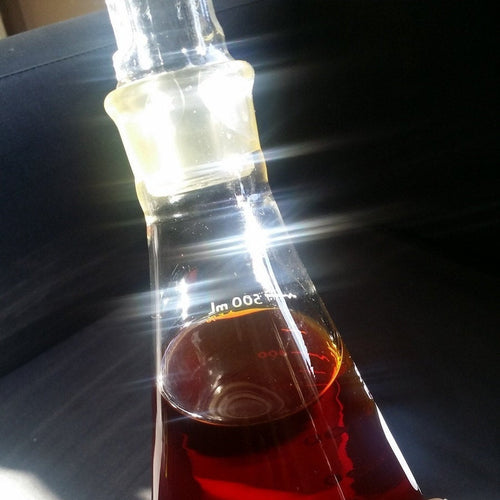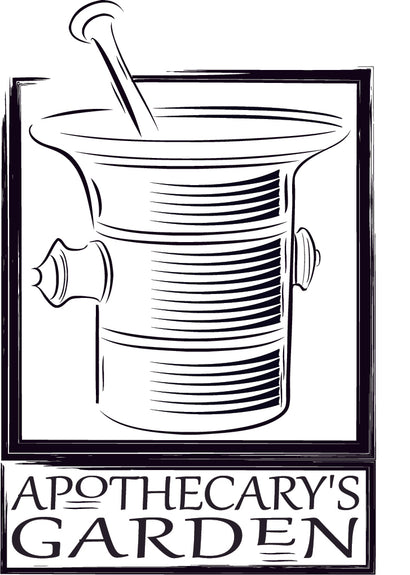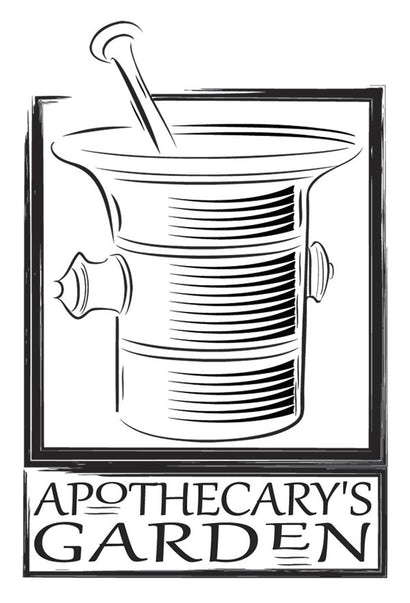U.S. CUSTOMERS: Tariffs are included in the product prices until the situation changes. Click here for more info.
U.S. CUSTOMERS: Tariffs are included in the product prices until the situation changes. Click here for more info.

COPAL-What you need to know before you buy.
by Dan Riegler November 20, 2023 7 min read 1 Comment
What we expect when we buy Copal
When most of us think of Copal, we have an image of a sacred, fragrant resin used for ritual and ceremony in Mesoamerican cultures. A traditional offering, raised to the Gods and ancestors on a pillar of smoke. Not necessarily true! Always read the fine print and make sure you know what you are buying!

What we usually get when we buy Copal
Did you know that what is often marketed as "Sacred" White Copal online, is something quite different. Something that has never seen the Americas and whose main use is for varnish?
Dammar-Gum Damar-Indonesia

There are 2 types of resin named Copal
The confusion is understandable when we realize there are two very different types of resins that are officially called Copal. Though both types can be burned as incense, they have very different sources, histories, physical traits and applications. They can most easily be categorized as soft and hard Copals.
Soft Copals
In Central America, the word Copal simply means incense. This term is applied universally to all aromatic tree resins used for ceremony and ritual. Mostly soft Copals, these oleoresins contain varying proportions of essential oils which lend them fragrance and soften the resin. Soft Copals originating in Central and South America have a long tradition of use as incense in and in traditional medicine. Most soft Copals are soluble in warm oils and have an affinity with the skin making them useful from a medicinal and cosmetic perspective.

Soft Copals are excellent in therapeutic and cosmetic oils, salves, serums and Cremes . A muscle rub is shown above with the addition of St. John's Wort oil.
Hard Copals
On the other hand, Western language borrowed the word Copal and uses it to mean hard, clear resins that lend themselves to the preparation of durable finishes. Hard Copals are odourless, brittle, translucent or clear and most break with a glass-like fracture. Hard Copals are often semi-fossilized which means they have been buried in the ground for hundreds or thousands of years. Before petroleum-based resins were available we used tree resins in the production of surface treatments for wooden objects, musical instruments, furniture and decorative coatings as well as for adhesives and in many art forms.

The Flemish masters developed methods of incorporating copal in their paints that gave them an enamel-like finish. (David Rijckaert III / 'The Alchemist', 1649, Flemish School, Oil on panel, 58 cm x 86 cm, P01730. Museum: MUSEO DEL PRADO, MADRID, SPAIN. )
Aroma or durability? Ceremony or craft?
It is up to us to understand the difference between them and to be knowledgeable enough to choose the material best suited to our needs.
A short list of soft Copals used in Mexico and Central America
The number of trees in central and South America that offer an aromatic oleoresin called "Copal" is likely as great as the tribes in these areas. Each region has its "Copal Negro" and "Copal Blanco" harvested from their local trees. The main tree families that provide us with soft Copals in the Americas include Bursera, Protium and Pinus, (Pine). Many species of resin-bearing trees have not yet been identified. Below is a short list of the Central and South American Copal resins most commonly available in the Western market
Protium Copal-Belize/Guatemala
Locally called Copal Pom or Pom Copal, Protium Copal resin is marketed fresh and sticky and wrapped in Banana leaves. Its aroma is intense, fruity, uplifting sweet and sharp with a lovely soft musk note. Reminiscent in fragrance to the Elemi resins of Africa and Asia. Protium Copal is found mainly in Belize, Guatemala and Western Mexico. You can find more information about Protium Copal HERE.

Breu Copal-Breu Claro-Bursera Heptaphyllum
Brue Copal is from the Amazon rainforest. It is harvested sustainably from material that has accumulated at the base of trees over years. The sustainability is noticeable if the material is dry and crumbly on the surface and the colour faded with oxidization. You can find more information on Brue Copal here.

Breu Copal-BreuClaro-Bursera heptaphyllum-Brazil
Protium Paniculatum-Copal Negro-Peru
Known in Mexico as Copal Negro or Black Copal, P. Paniculatum is one of many resins that is sold under that name. It seems every culture and geographic area has its own Copal Negro, (and Copal Blanco). This particular resin yields a gorgeous and fragrant emerald green essential oil when distilled. More information about Protium paniculatum HERE

Black Copal- Bursera heteresthes-Guatemala
Copal Negro Guatemala. There are many resins named Copal Blanco and Copal Negro. It is always a challenge to ferret out the species name of the tree that produces them. This resin is fruitier in aroma than Copal negro from Peru. More information about Copal Negro-Guatemala here.

Copal Blanco-Bursera Bipinnata-Mexico
Copal Blanco-White Copal-Mexico. Also referred to as Sacred White Copal, is used extensively in Mexican homes and celebrations of Day of the Dead, this is likely the best known Copal Blanco. It is collected by traditional Copaleros, often using the ancient method of suspending Agave leaves to collect the resin as it drips from the tree. (Nowadays, one also finds this wonderful resin collected in split, recycled pop bottles). Trees are often grown from seed and chosen for their fragrance and yield. Copal Blanco is also collected from other species of Bursera trees throughout the region. More information about Mexican sacred white Copal can be found here

Copal Blanco-Bursera bipinnata resin-MexicoOcote Pine-pinus Montezumae
Pinus Montezumae-Montezuma pine
There are a number of Pine species in Central America that yield a fragrant resin which is used as incense and in traditional medicine. These resins are, of course called locally, Copal

A list of hard Copals not found in the Americas.
Zanzibar Copal-Hymenea verrucosa-Madagascar/Zanzibar
Hymenea verrucosa or Zanzibar Copal is prized for it's hardness and esteemed for use in creating durable lacquers and varnishes. It comes from East Africa and was shipped around the world from Zanzibar. Often the material is semi fossilized though the resin from Madagascar is recent and due to special compounds in the soil it deteriorates after a few hundred years in the ground. One often finds insects imbedded in the resin. This resin, even when recent is very hard, brittle and makes a lovely tinkling sound when shaken in the palm of one's hand. The name Hymenea verrucosa has a very interesting meaning. You can read more about Zanzibar Copal here.
 Learn more about Hymenaea verrucosa-Zanzibar Copal-here
Learn more about Hymenaea verrucosa-Zanzibar Copal-here
Hymenea courbaril-Mexico
Hymenea courbaril, also called Mexican Copal or golden Copal is the exception to the rule, (always seems to be one!) This is a hard Copal used in Mesoamerica as incense. This is a semi-fossilized resin that is extracted from sandbanks and river edges in Southern Mexico. It is a sustainable harvest in that the material has been buried for centuries. ( I see it as semi-sustainable since no trees are harmed, but it is a resource that will run out eventually). It is a crystal clear golden translucent colour covered with a white bloom of oxidation. When burned, it has a sweet, pleasant, mellow aroma with hints of vanilla and generates a thick smoke that is easy on the lungs. Though it is not a renewable resource, no trees are harmed in the collection process. Though Mexican Copal is not a fresh Copal, it is used in Central American ceremonies and homes. You can read more about Mexican Gold Copal here.
Hymenea Courbaril-Mexican Gold Copal
Dammar-Shorea javonica-Indonesia
Dammar resin from various species of Shorea trees in Indonesia. Dammar resin, (also spelled Damar), is what we most often receive when we buy Copal online. I have seen it sold as Sacred Copal, Mexican copal and Copal Blanco. I hate to think vendors are intentionally hoodwinking or misleading customers, so I will assume that most vendors are ignorant of the source, uses and cultural affiliations of these resin families. Dammar resin is used extensively for a wide range of industrial applications. Though its use has dwindled with the development of petroleum-based resins. Dammar trees are usually plantation grown or grown and harvested in traditional farm forests planted by farming families as an added income. Dammar resin is often used to adulterate other resins such as block benzoin and is an important ingredient in traditional incense and Bakhour blocks. You can find more information about Dammar Copal here.
Dammar resin-Shorea Javonica and other species-Indonesia. Not Mexican Copal.
Angola Copal-Copaifera Demusii-Angola/Congo
Angola Copal, Copaifera Demusii. Congo Copal. A semi fossilized resin from East and central Africa. Harvested from the ground. Another lovely incense with a soft, sweet and mellow thick smoke. Pieces fracture clear as glass with black or golden inclusions. You can learn more about Angola Copal here.
Angola Copal-Copaifera Demusii-Angola
Borneo Kauri
Borneo Kauri Copal, Agathis borneensis from Sumatra and Borneo is the recent resin from an evergreen tree. Though new Zealand kauri is better known and often fossilized, Borneo Kauri is more readily available. I believe the deposits of New Zealand Kauri are for the most part, exhausted..
Educate yourself, read the fine print and insist on species names from sellers
So, in conclusion, remember that not all Copals are associated with sacred Mesoamerican ceremonies. Read the fine print and hold vendors accountable for species specificity.
Dan

Dan Riegler is an Herbal Apothecary, Artisan, formulator, distiller and advocate for sustainable management of our aromatic and medicinal plants. A lover of Nature, he is friends with many trees and a sap for resins. Apothecary's Garden provides an ever-growing selection of fresh & fair trade, ethical and sustainably harvested medicinal and aromatics including Frankincense and Myrrh, local and exotic fragrance materials, artisan distilled essential oils, natural perfume ingredients and animal essences. Apothecary's Garden shop also showcases Dan's aromatic, cosmetic and therapeutic preparations, salves, cremes, tinctures and oils, as well as those of Guest artisans from around the world.
The Blog, Apothecary's Garden is a journal about Herbs, plants and processes, recipes, plant Alchemy, traditional wisdom and our Relationship with Nature.
1 Response
Leave a comment
Comments will be approved before showing up.
Also in Apothecary's Garden Blog

How to make a Frankincense Resin Extract with Boswellic acids
by Dan Riegler February 13, 2025 5 min read
The resin portion of Frankincense contains very valuable therapeutic compounds called Boswellic acids. You won't find them in the water-soluble gum, and you will not find them in the essential oil of Frankincense. We cannot use these resin acids to their fullest extent until we liberate the resin from the gum portion.

Sumatrana Benzoin-A New sustainable resin for Medicine, Incense and perfume
by Dan Riegler February 05, 2025 5 min read
Sumatrana Benzoin is harvested sustainably by farmer families in a small area of Northern Sumatra. This resin is unique in that it has floral notes other Benzoin types Lack. It has only recently been introduced to the Western market for use in perfume, medicine, incense and cosmetics.

How to make a Medicinal Tincture of Frankincense
by Dan Riegler January 23, 2025 5 min read
There are several ways we can benefit from the anti-inflammatory and anti-cancer resin compounds found in Frankincense resin. A tincture is one of them and an easy product to make at home.
Recent Articles
-
How to make a Frankincense Resin Extract with Boswellic acids
February 13, 2025
-
Sumatrana Benzoin-A New sustainable resin for Medicine, Incense and perfume
February 05, 2025
-
How to make a Medicinal Tincture of Frankincense
January 23, 2025
-
Frankincense as Medicine-Truth, Myth, and Misinformation
January 15, 2025
-
Sustainable Frankincense from the Samburu women of Kenya
December 04, 2024
-
How to make a Tincture of Myrrh for oral health
November 27, 2024
-
Green Frankincense Demystified
October 04, 2024
-
How to make an oil extract of Frankincense-2 methods
January 17, 2024
-
Suhul Myrrh-A gift from the trees
January 03, 2024
-
How to prepare Winter Medicine with local Tree Resins
December 14, 2023
Categories
- Akba
- Ambergris
- Animal Welfare
- Animalics
- Anti-inflammatory
- Aphrodisiacs
- Aphrodite
- Apothecary Arts
- BA
- Benzoin
- Boswellia
- Boswellia Carterii
- Boswellia Frereana
- Boswellia Neglecta
- Boswellic Acids
- Boswellis Serrata
- burn incense
- cancer
- Censer
- Chest Rub
- Commiphora
- Commiphora Myrrha
- Copal
- Cough Balm
- DIY
- DIY Frankincense extract
- Fair trade
- ferula
- Frankincense
- Frankincense Absolute
- Frankincense as medicine
- Frankincense Extract
- Frankincense Neglecta
- Frankincense Sacra
- Frankincense Tincture
- Frankincense tutorial
- Incense
- Incense burners
- Incense Making
- Incense Resins
- kenya
- Medicated oils
- Medicine chest
- Muscle Rub
- Musks
- Myrrh
- Myrrh tincture
- new
- Perfume
- Perfume Ingredients
- Perfume Making
- Perfumery
- Pine
- Pine Resin
- Resin extract
- Royal Green Hojari
- Sacred Copal
- Samburu
- Spruce Resin
- Suhul Myrrh
- Sultans Select
- Sumatrana Benzoin
- Sustainability
- Sustainable Frankincense
- Sustainable Harvest
- tincture
- Traditional Medicine
- Tree Medicine
- Tree Resins
- Tutorials
- Wildcrafting
- Wood finishes
Where are you Blog posts Dan?
Please bear with me as I rewrite, update and link my old Blog posts to the new shop. If you don't see the tutorial or post you are looking for, pop in periodically. I should have them all up, updated and running in the next few weeks.
Subscribe
Sign up to get the latest on sales, new releases and more …
- Comments
- DISQUS







Donna Hiebert
November 28, 2023
Thank you for this article, Dan!